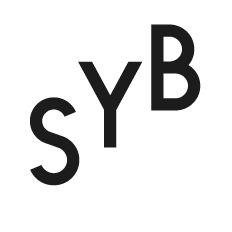26 till 26 April 2014
“I’M GOING TRAVELLING” SAID THE ZEBRA CROSSING
Review by Judith Spijksma
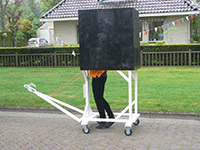
In Beetsterzwaag, young and old made their way to the streets on King’s Day to watch the village parade, an annual highlight. The village was taken over by people in chicken suits, hippies and witches, masterchefs and Tom Thumb who at the end of the tour fell out of the boots that were far too big for him. There was an immense chicken farm (Kiptopia), which left a trail of feathers, and a nuclear plant ‘Fukuzwaag’ with wailing sirens and men in white suits. Practically the whole village had turned up to admire the pomp and circumstance in the main street and little side streets of Beetsterzwaag. Remnants of the parade were visible for a long time afterwards through the many chicken feathers scattered along the road.
Moving forth slowly and unassuming, amidst the dolled up residents with their large decorated floats of papier-mâché or other materials, was a work by Laura Bolscher.
Bolscher made three floats for the parade: a zebra crossing, a traffic light, and a roundabout with the Statue of Liberty in the middle. Her objects are a literal response to the place in which the work was to be seen; the streets of Beetsterzwaag. Every year, Kunsthuis SYB calls upon an artist to take part in a parade in honour of King’s Day, formerly Queen’s Day. A residency will often take place in the period leading up to it, giving the artist the time to develop his or her work for a presentation and parade.
Previously, a project by Kamila Szejnoch enabled a candy house to travel in the parade, referencing the history of Kunsthuis SYB, which used to be the village sweet shop. This year, Laura Bolscher was invited to spend three weeks in Kunsthuis SYB to work on a presentation and a contribution to the parade. Bolscher graduated from Minerva Art Academy in 2013. There she showed an installation, De doelloze discussie (The aimless discussion), made from familiar objects; an electrical socket, a radiator, pipes and more sockets. A minimalistic-looking installation at first sight, but with a strong anecdotal character upon closer inspection. What is typical of Bolscher’s work is how she deals with spaces, physical and formal but also the significance and function of objects and parts in those spaces. In various installations she created repetitions of the space, made adjustments, and added copies of existing elements.
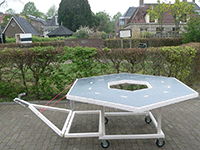
She has previously taken part in a 24-hour residency in Kunsthuis SYB, by now a familiar space to her. These work-periods can be important for a younger artist like Bolscher to further develop her work. From this position, Bolscher wanted to research how her work functions within different settings, amidst the work of other artists and in the middle of a parade. How can an installation that is made for a space gain a place and form between the floats made in honour of this public holiday? How can art function within the context of a parade? Her outlook is clear: “For King’s Day the objects from my installations will gain wings. They will rise above and enter the public domain. They will move forth, transferring themselves with pride, pomp and circumstance.”
The parade for Bolscher is the stage on which her artworks must come to life. Although she has previously made and shown her work within various contexts (group exhibitions, short residencies including De Gym nightclub in Groningen, festivals, and also Kunsthuis SYB), this parade is perhaps the most distinct and unusual stage for her work to date. Furthermore, it is a context that is very definitive for the work, it is fleeting and between the floats that are each screaming for attention, a segment can easily go unnoticed. The public expects mobile stories, large objects and people dressed up. The bigger and more colourful, the better.
Bolscher’s work only partly meets these expectations. The artist and two others each pushed along a float. ‘Walking’ in front was a zebra crossing, an open cubicle the size of a fitting room with a young woman inside dressed in a zebra legging and T-shirt with matching shoes. The zebra crossing was followed by a traffic light, a closed cubicle also the size of a fitting room. Last was Bolscher pushing along a roundabout, with herself in the middle dressed as the Statue of Liberty. The Statue of Liberty was chosen randomly; Bolscher wanted to display the archetypal image of a roundabout with a statue in the middle. The Statue of Liberty, so she thought, would be the most recognisable as such. The three ‘wagons’ are noticeably equipped with a towing hook, even though they failed to serve a single purpose.
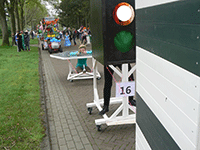
The roundabout, the traffic light, and the zebra crossing became characters in Bolscher’s work. They came to life and moved along the road of which they are part of. In the work of Bolscher an electrical socket is capable of having a discussion, and a zebra crossing no longer permits it to be crossed. Bolscher gives the objects a voice, allows them to talk to one another and is able to combine, sometimes successfully, sometimes less successfully, the anecdotal with the formal.
It is an interesting starting point, raising the dead, soulless objects and concepts to life, and subsequently addressing our relationship with these objects. Yet Bolscher has not entirely succeeded in getting this across, and this has to do with the execution among other things. The roundabout is recognisable as such, but the Statue of Liberty is far too much the Statue of Liberty for it to evoke the notion of a typical artwork on a roundabout. The significance of this component does not speak for itself.
The mobile fitting room that is supposed to serve as a zebra crossing remains far too much a fitting room for it to really work within the fleeting entirety of the parade. The same goes for the traffic light, which is barely visible between the roundabout and the zebra crossing. Between the bombastic and narrative floats of the other participants, Bolscher’s story somewhat fades into the background. Rather than playing along with the other fictional characters of Snow White and Tom Thumb, the choice of the wagons’ subjects raises more questions.
After the parade, Bolscher’s wagons were brought to a school where they’ll serve as playground equipment. And they’re probably in the right place too, in the perception of children where trees can talk and things can embody human qualities. Bolscher’s work has something childish, it’s own logic that distances itself from rational thought. Her contribution to the float is reminiscent of ‘playing doctors and nurses’ or rather ‘playing roads’, without wanting to label her work as being childish. Bolscher could further explore her role and also the impact and the manner in which her artworks communicate. But at its core this approach of playing and the play with reality and her objects is a good starting point.
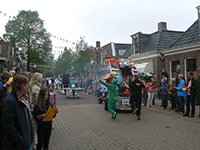
translation: Jenny Wilson
